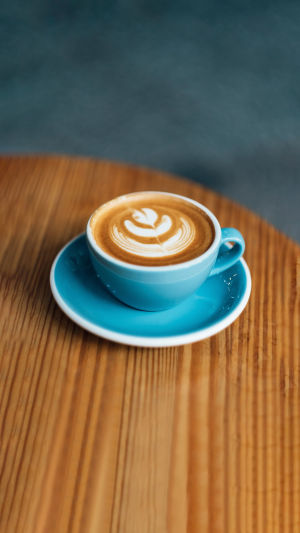Latte art represents a unique expression within espresso, where skilled baristas continually innovate diverse patterns to delight customers and demonstrate their professionalism.
The hallmark of latte art lies in the harmonious marriage of expertly brewed espresso and perfectly steamed milk, which serve as the canvas for intricate designs.
Flower pulling, a fundamental technique in latte art, relies on the foundation of espresso to create beautiful milk froth designs. The essence of each crafted pattern lies in the scientific interplay between milk and espresso fluids, resulting in an array of complex designs with similar pouring techniques.
Before executing a flower pull, allowing the milk foam and espresso to meld seamlessly is imperative.
As the coffee pouring commences, the milk foam should be delicately poured from approximately 5 centimeters above the coffee's surface, aiming to achieve a thin, mouse-tail-like flow. Gradually pouring the milk foam as close to the coffee's surface as possible allows for a gradual incorporation, with the foam blending into the coffee rather than remaining separate.
Creating a symmetrical floral design involves pouring one liquid into another, requiring a mindful approach to ensure a cohesive pattern. The force exerted by the milk froth upon entering the coffee pushes the floral design forward, intertwining the white foam with the brown espresso.
Maintaining this balance is crucial, as pouring too steadily from the coffee's center results in an outward-spreading pattern. In contrast, an off-center pour may lead to a less defined, elongated design.
The volume and speed of the milk froth flow play a pivotal role in determining the final pattern's appearance. Pouring an excess of milk froth too rapidly risks disrupting the delicate design already formed at the coffee's base.
Similarly, pouring the foam too far from the coffee's surface may cause splashing, resulting in a disorganized pattern.
It is essential to note that increasing the milk froth flow should be executed after lowering the jug's spout rather than simultaneously. This sequential process allows for a controlled flow of milk foam from the bottom of the jug, facilitating precise placement on the coffee's surface.
<b>The process of executing a flower pull follows a series of meticulous steps:</b>
Begin by tilting the cup at a 10-15 degree angle, with the mouth set at 1/3 full.
Pour a small amount of milk foam to break the coffee's surface tension.
Continue pouring milk foam steadily and in small increments until the cup is 5/6.
Lower the milk jug closer to the cup's mouth when "white spots" of foam appear on the coffee's surface.
Increase the flow of milk foam and shake the jug in a Z pattern, approximately 1 cm above the coffee's surface, to create a heart-shaped layering effect.
Slowly flatten the cup as the milk froth increases, ensuring a smooth pour.
When the cup is nearly complete, raise the jug slightly and fine-tune the milk froth flow to create the central point of the heart shape.
Allow a small flow of milk foam to travel from the centerline to the cup's edge.
Complete the pattern by collecting the milk foam at the cup's edge, resulting in a perfectly shaped heart.
By following these meticulous steps and mastering the art of latte art, baristas can transform a simple cup of espresso into a visually captivating work of art that delights both the eyes and the palate.





